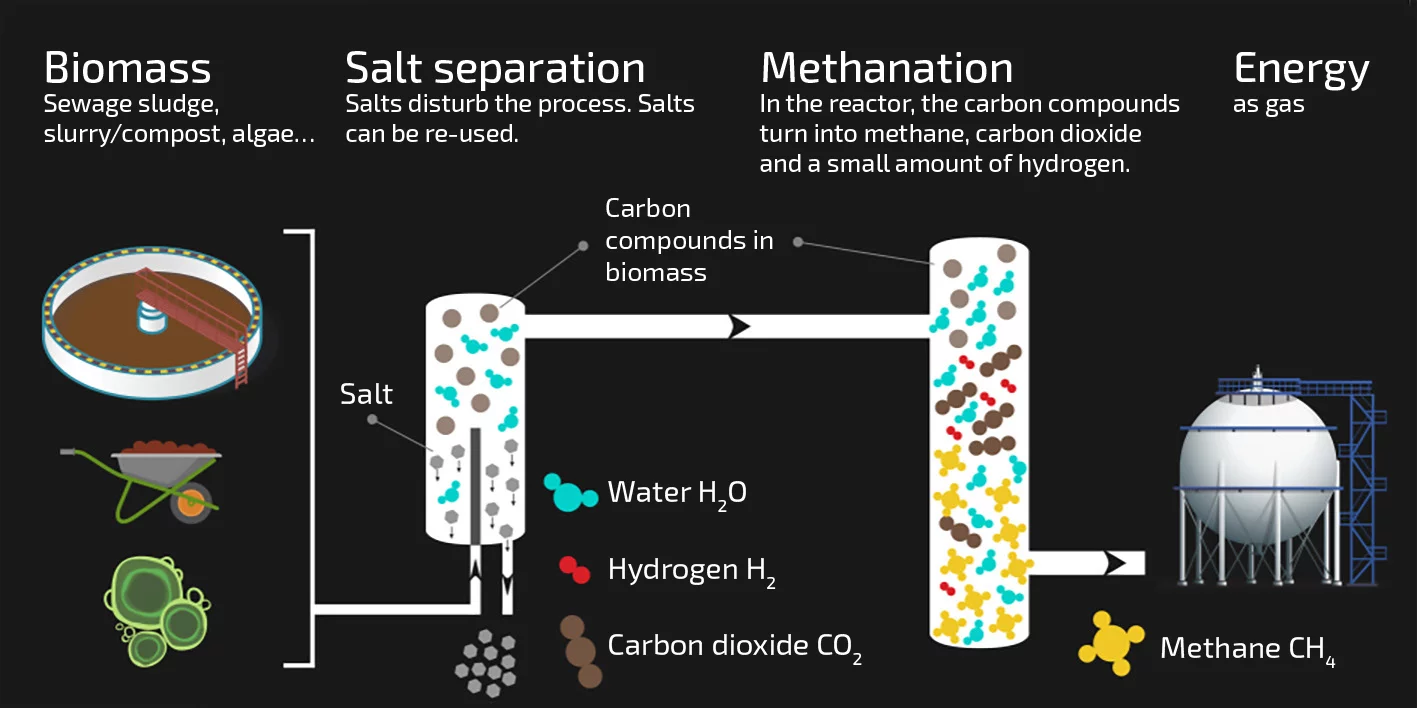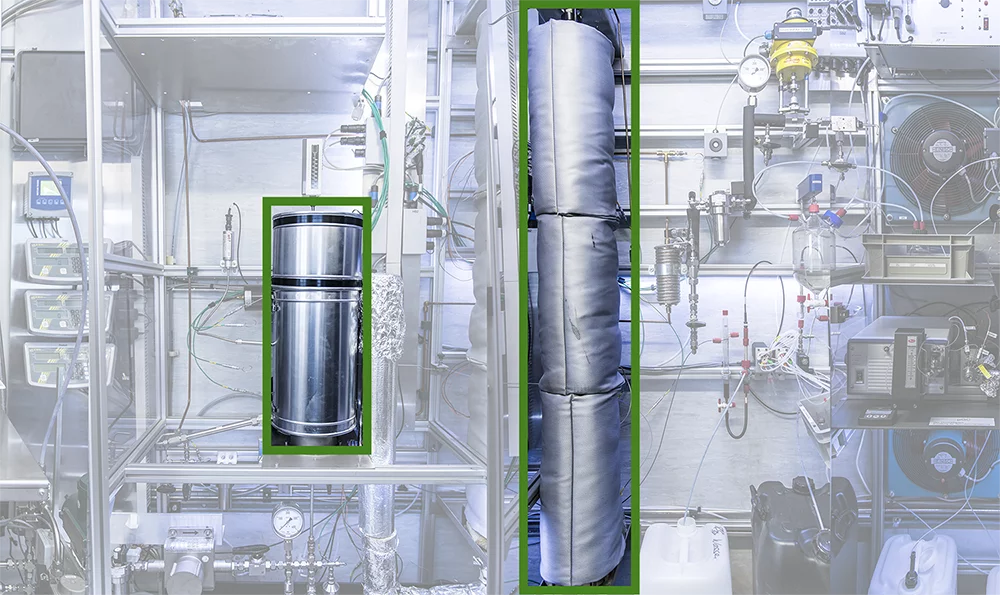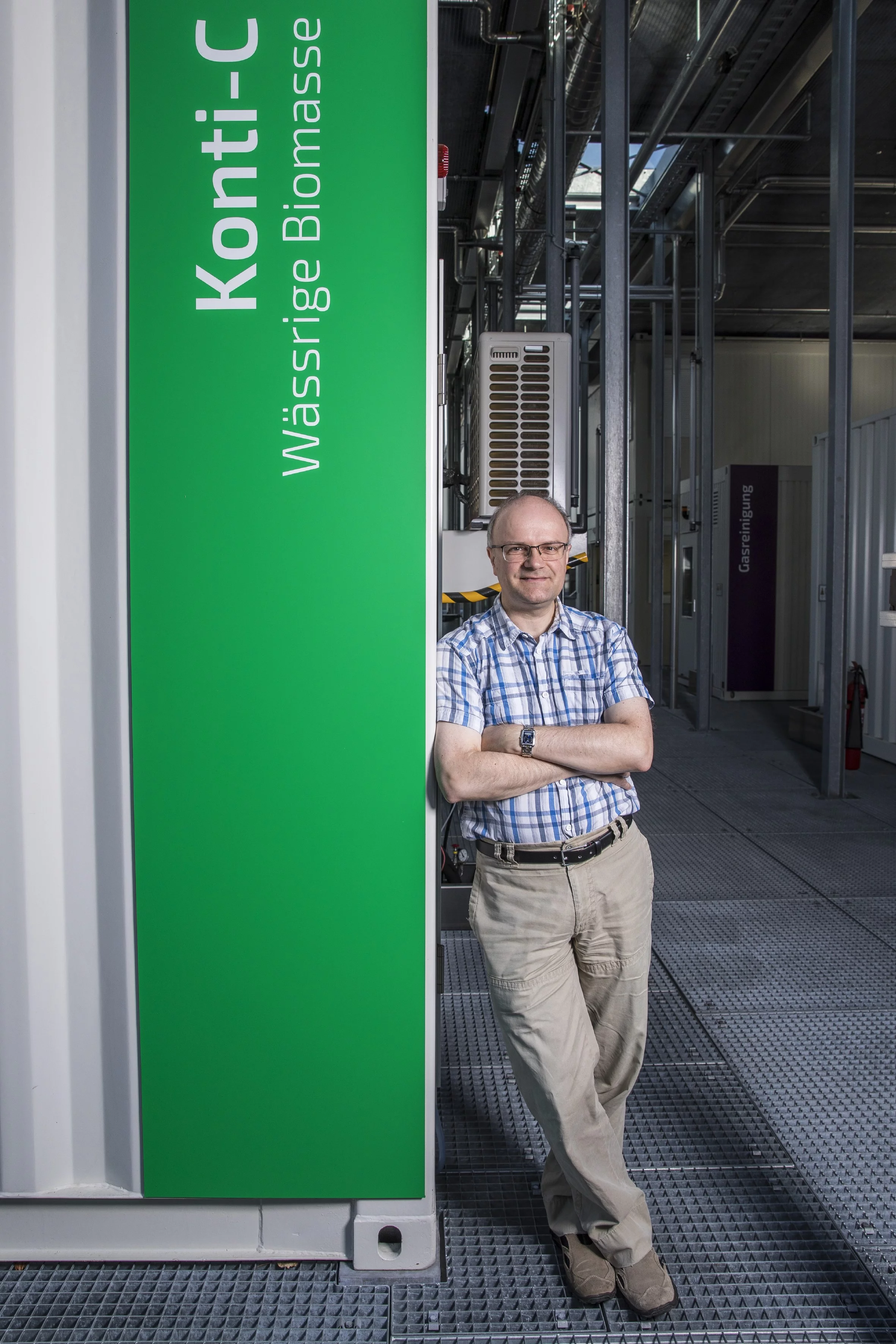Because of their high nitrogen content, spent coffee grounds are a popular garden fertilizer. Recycled in this manner, they already contribute to an environmentally friendly waste management. But they have the potential to deliver much more: a new procedure developed at the PSI allows high quality methane to be formed from spent coffee grounds. PSI researchers involved in a pilot project carried out in cooperation with the Swiss food producer Nestlé were able to show that spent coffee grounds left over during the production of instant coffee can be efficiently re-used elsewhere.
As part of its food production processes, the Swiss food industry produces about half a million tons of organic waste a year. The food industry is very interested in reducing the amount of waste wherever possible as well as in usefully re-cycling unavoidable waste. At the moment, about three quarters of such waste is already re-used in animal feeds. A little more than nine percent is composted and just under 11.5 percent is used in energy production.
Considerable potential still exists when it comes to converting energy from waste—such as the production of valuable bio-methane gas from spent coffee grounds. Within the framework of a pilot project carried out in cooperation with the Swiss food producer Nestlé, PSI researchers were able to demonstrate the PSI-developed procedure.
Bio-Methane from spent coffee grounds
In order to carry out the necessary experiments, moist spent coffee grounds left over from the production of instant coffee were made available by Nestlé. The spent coffee grounds were then heated in an experimental PSI facility to a temperature of about 450 °C and subjected to a pressure of about 300 bar. During this procedure, the water contained in the spent coffee grounds transitioned into a state in which it is neither liquid nor gas, known as a supercritical state. This has the advantage that the mineral nutrients contained in spent coffee grounds do not dissolve, as they would in water, but can be easily separated off. The next process step is to turn the residual coffee grounds into methane with the help of a catalyst.
The first results are very promising: about sixty per cent of the energy contained in spent coffee grounds was converted into methane during the pilot project. This enabled us to show that it's technically possible to form methane from spent coffee grounds
, says Frédéric Vogel, Group Head of Catalytic Process Engineering at the PSI and Professor for Renewable Energies at the University of Applied Sciences and Arts Northwestern Switzerland. However, a more efficient facility is necessary in order to carry out a more reliable field test. Only then will we be able to extrapolate industrially relevant data from these research results
, says Vogel. Such a facility is currently being set up at the PSI. A further important step is establishing the procedure's economic viability. Only once this has been guaranteed will the procedure be considered cost efficient for use in the food industry.
Versatile Procedure
In the meantime, PSI researchers are already thinking about further uses for spent coffee grounds. Their research is focused on its tried-and-tested application as fertilizer. The pilot project also showed that the mineral salts separated off during the experiment—in particular the nitrogen bonded in the salts—could provide high quality fertilizer. Researchers are now interested in also following up on these experiment results.
Furthermore, the procedure developed at the PSI can, in principle, be applied to all varieties of organic waste with a sufficiently high water content. The converted methane can be used in a number of ways. It can be fed into the gas grid or used to produce electricity. The great advantage of this process is that the waste products used in the procedure are often moist but do not need to be subjected to elaborate drying processes in order to be converted into energy. This means that the energy can be saved, reducing the costs incurred by other procedures such as waste incineration. The challenge we face with this procedure lies in the different constituent elements that make up organic waste, for which the procedure has to be optimized on a case-by-case basis
, explains Frédéric Vogel. This is where the catalyst used in the procedure plays an important role, which is why the PSI continues to focus on catalyst research.
The pilot project was carried out at the PSI's ESI Platform within the framework of the Energy Competence Centre for Bioenergy, SCCER BIOSWEET. The ESI (Energy System Integration) Platform is an experimental platform at which research and industry can test promising problem-solving approaches aimed at integrating new, renewable energies in the Swiss energy system. Such renewable energies include solar energy and wind power as well as energy from biomass. Led by the PSI, SCCER BIOSWEET is one of the competence centres for energy research initiated by the Swiss Confederation within the framework of the Coordinated Energy Research action plan. It aims to increase the contribution made by bioenergy to Switzerland's energy supply.
Contact
Prof. Dr. Frédéric Vogel
Group Head Catalytic Processes Engineering
Laboratory for Bioenergy and Catalysis
Paul Scherrer Institute PSI
+41 56 310 21 35
frederic.vogel@psi.ch
Professor for Renewable Energies
School of Engineering
University of Applied Sciences and Arts Northwestern Switzerland FHNW
5210 Windisch, Switzerland
+41 56 202 73 34
frederic.vogel@fhnw.ch
Additional information
About PSI
The Paul Scherrer Institute PSI develops, builds and operates large, complex research facilities and makes them available to the national and international research community. The institute's own key research priorities are in the fields of future technologies, energy and climate, health innovation and fundamentals of nature. PSI is committed to the training of future generations. Therefore about one quarter of our staff are post-docs, post-graduates or apprentices. Altogether PSI employs 2300 people, thus being the largest research institute in Switzerland. The annual budget amounts to approximately CHF 460 million. PSI is part of the ETH Domain, with the other members being the two Swiss Federal Institutes of Technology, ETH Zurich and EPFL Lausanne, as well as Eawag (Swiss Federal Institute of Aquatic Science and Technology), Empa (Swiss Federal Laboratories for Materials Science and Technology) and WSL (Swiss Federal Institute for Forest, Snow and Landscape Research). (Last updated in June 2024)



